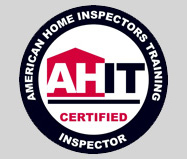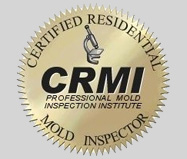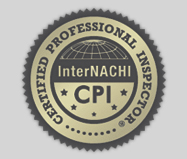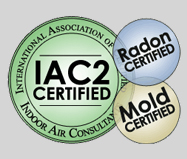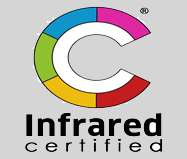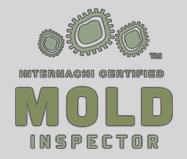
What is a Home Inspection?

A home inspection is a professional, objective, visual examination of the condition of a home. Home buyers now entering the marketplace view inspections as a way to gain valuable information about the biggest purchase of their lifetime. It helps them to determine whether there are any major defects or system inadequacies at the time of purchase.
In most cases, home inspections are performed after a sales contract, conditional upon a satisfactory home inspection, has been accepted by the seller. The inspection can usually be arranged immediately to within a few days. The home buyer is typically encouraged to attend the inspection, so that he/she can see first hand the workings of the home. It also represents an excellent opportunity for the prospective buyer to ask questions about the home or to discuss potential changes.
Home inspections should also highlight the positive aspects of a home. In fact, many of the home inspector’s observations or recommendations help to dispel home purchaser anxieties, and provide useful repair suggestions.
The home inspector’s service to the purchaser is primarily one of education. The goal of the inspector is to provide the purchaser with a better understanding of the physical condition of the home in order that they can make a well-informed decision. It is also the inspector’s role to keep his findings in perspective for the buyer. After the inspection is completed, a written report should be prepared for the home buyer, documenting the results of the inspection.
The home inspection should not be confused with an appraisal, a municipal code inspection, an environmental audit, or a home owner’s warranty.
A complete home inspection should cover all of the major systems of a house, including structure, exterior, roofing, electrical, heating, cooling, insulation, plumbing and interior. As a minimum, an inspection should meet the Standards of Practice of the International Association of Certified Home Inspectors (InterNACHI).
Consumers should be very careful when shopping for a home inspector. The industry on the whole is unregulated and many unqualified people offer home inspection services.
What is a Mold Inspection?

Why inspect or test for Mold
The purpose of a mold inspection is to determine the presence of mold spores in an indoor environment, our mold inspection will determine what kind of mold genus were found, the amounts found in the air or a surface if mold is visible and if the amount of spores found are normal for that environment or elevated. Another purpose of a mold inspection is to determine the cause of the indoor air quality problem and the solution.
Mold and your Health
We are exposed to many kinds of mold both indoors and outdoors. The exposure is greater in damp or wet conditions, especially when timely drying out does not have a chance to occur. Of the thousands of molds that exist, some are known allergens (aggravating or causing skin, eye and respiratory problems) and a few molds produce harmful mycotoxins that can cause serious problems. But all molds, in the right conditions and high enough concentrations, are capable of adversely affecting human health. The potential for health problems occurs when people inhale large quantities of the airborne mold spores. For some people, however, a relatively small number of mold spores can cause health problems. Infants, children, immune-compromised patients, pregnant women, individuals with existing respiratory conditions and the elderly are at higher risks for adverse health effects from mold.
The most common Allergic Effects are:
- Nasal congestions and irritation
- Mucous membrane irritation
- Allergic reactions – Rhinitis and Asthma
- Sneezing and coughing
Toxic Effects:
Mold toxins studies suggest that toxins may be the cause of:
- Pulmonary hemorrhage
- Reactions in the immunological system (reducing the ability to react to diseases)
- Neurotoxin effects such as:
- Fatigue
- Headaches
- Memory loss
- Depression
- Erratic moods
- Convulsions
- Shaking
- Potential cancer trigger
Eventually, mold destroys whatever it grows on. It can ruin furnishings, destroy cabinets and cause serious damage to the structural elements in your property. Mold is extremely durable and adaptable. It can survive in the harshest conditions and is resistant to even the strongest disinfectants and bleaches. Eliminating leaks and moisture can slow the spread of mold, but testing to determine the type of mold is the first responsible step in creating an effective action plan.
What is a Infrared Inspection?

What is an Infrared Camera?
An infrared (IR) camera is a versatile, lightweight and cutting-edge device that can enhance an inspector and clients’ understanding of a buildings different systems and components. Its ability to read heat as color and then display that information in a way that’s easily understood by homeowners and clients makes the IR camera an invaluable tool for anyone that owns or manages a property. Infrared cameras translate the heat signatures of objects into colors on a gradient scale, with higher temperatures appearing as lighter colors, and lower temperatures and wet areas appearing as darker colors. Also known as thermal imaging and thermography, IR technology captures the light that exists just outside the visible spectrum. Thermal images show surface-heat variations, which is why an IR camera is such a diverse tool for commercial and residential inspections that can be used for a variety of applications. Abnormally hot electrical components and connections can be viewed during an electrical inspection. Areas of moisture that may lead to leaks and structural damage can be located based on apparent temperature differences. Heat loss and air leakage in a building envelope, and even areas of insufficient insulation, can be pinpointed quickly and accurately during an infrared inspection.
Infrared Services Using Thermography
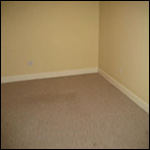 |
This is an image of a finished basement as you would see it through the lens of the regular digital camera. |
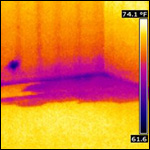 |
This is an image of the same area viewed through the lens of the infrared camera. As you can see, this water leak is now easily detected. |
Here at Home Inspections 24-7 we utilize the newest technology available for Home Inspections to help you as a seller to better understand what could cost you money and where to spend your money to get the best price for your home. Home Inspection and Thermal Imaging gives you, the buying customer, added information to avoid costly hidden repairs that are missed on a regular basis by other home inspection methods. Not all Home Inspectors will find the hidden issue that a Thermal Imaging Inspection will find. Home inspectors are required to report only what they can see with the naked eye and will miss issues that can be spotted by Thermal Imaging Scan performed by Home Inspections 24-7.

Residential Infrared Inspection Services
In terms of detecting moisture intrusion, an IR camera can locate:
- Plumbing leaks
- Hidden roof leaks before they cause serious damage
- Missing, damaged and/or wet insulation
- Water and moisture intrusion at the foundation and building envelope that could lead to structural damage and mold
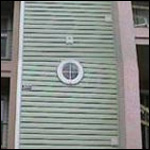 |
This is an image of an outside wall as you would see it through the lens of the regular digital camera. |
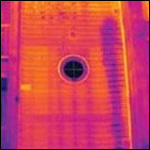 |
This is an image of the same area viewed through the lens of the infrared camera. As you can see, this hidden water leak is now easily detected. |
In terms of energy loss, an IR camera can detect:
- Heat loss and air infiltration in walls, ceilings, floors, windows and doors
- Damaged and/or malfunctioning radiant heating systems
- Air-conditioner compressor leaks
- Under-fastening and/or missing framing members, and other structural defects that can lead to energy loss
- Broken seals in double-paned windows
 |
This is an image of a bedroom through the lens of the infrared camera. The red color in the image shows missing insulation in the wall which leads to higher energy bills. |
IR cameras are equally effective at locating hot spots in the home, including:
- Circuit breakers in need of immediate replacement
- Overloaded and undersized circuits
- Overheated electrical equipment and components
- Electrical faults before they cause a fire
 |
This is an image of a light switch viewed through the lens of the infrared camera. One of the light switches is overheating, which can lead to an electrical fire. |
Additionally, based on the color gradients that thermal images provide, an inspector can locate:
- Possible pest infestation, as revealed by energy loss through shelter tubes left by boring wood-destroying insects
- The presence of intruders, such as rats, mice and other larger pests hiding within the structure and detected because of their heat signature that the IR camera captures
- Dangerous flue leaks, which can lead to carbon monoxide poisoning of the home’s residents
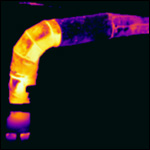 |
This is an image of a water heater flue pipe viewed through the lens of the infrared camera. The orange section of the flue is showing tempature in excess of 260 degrees fahrenheit. A definate fire hazard. |
U.S. Department Of Energy now recommends that a thermographic scan be done before purchasing a house, even on new homes.
Commercial Infrared Inspection Services

Infrared services has time and time again, in case study after case study proven that thermography is the most effective predictive maintenance (PM) technology available to quickly and accurately, and without interruption of operations, locate problems in various types of systems prior to failure.
Infrared Inspections Of Electrical Systems
In electrical system, components get hot before they fail. An infrared inspection can help identify “hot spots” in electrical equipment. Poor connections, overloaded circuits, load imbalances, and faulty, mismatched or improperly installed components can create resistance which leads to increased heating and eventual failure
Infrared Inspections Of Mechanical Systems
In mechanical systems, overheating can be caused by internal problem in motors, misaligned equipment, improper lubrication of rotating components, and improper tension on drive belts. Infrared inspections, or infrared surveys, can locate these mechanical deficiencies and help keep your equipment operating smoothly.
Infrared Inspections Of Commercial Roof Systems
Trapped moisture spells death for a roof and the underlying deck system. We can help you run an affective roof maintenance program by identify areas of trapped moisture with 100% coverage of your roof surface.
Infrared Inspections Of Building Envelopes
In hot and cold climates, positive or negative air infiltration can lead to high energy costs and unwanted moisture inside. Water infiltration can also be a detriment to plaster, drywall and other wall coverings and can also provide conditions favorable for mold development. We have helped many clients identify areas of latent moisture and active leak sites within various building constructions. Combined with our knowledge on mold we will be able to provide condition assessment and solutions to water infiltration problems.
